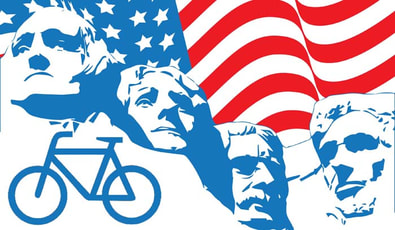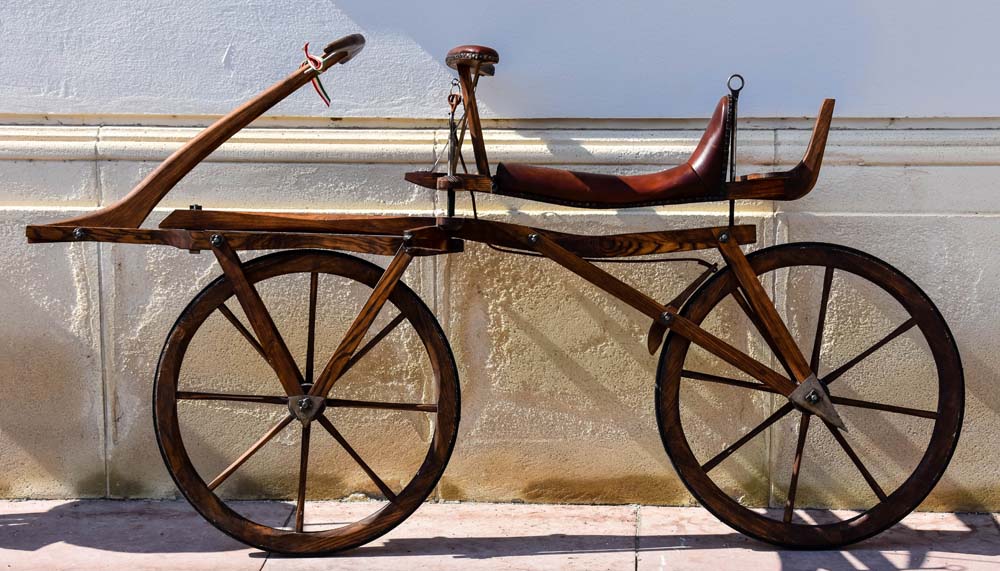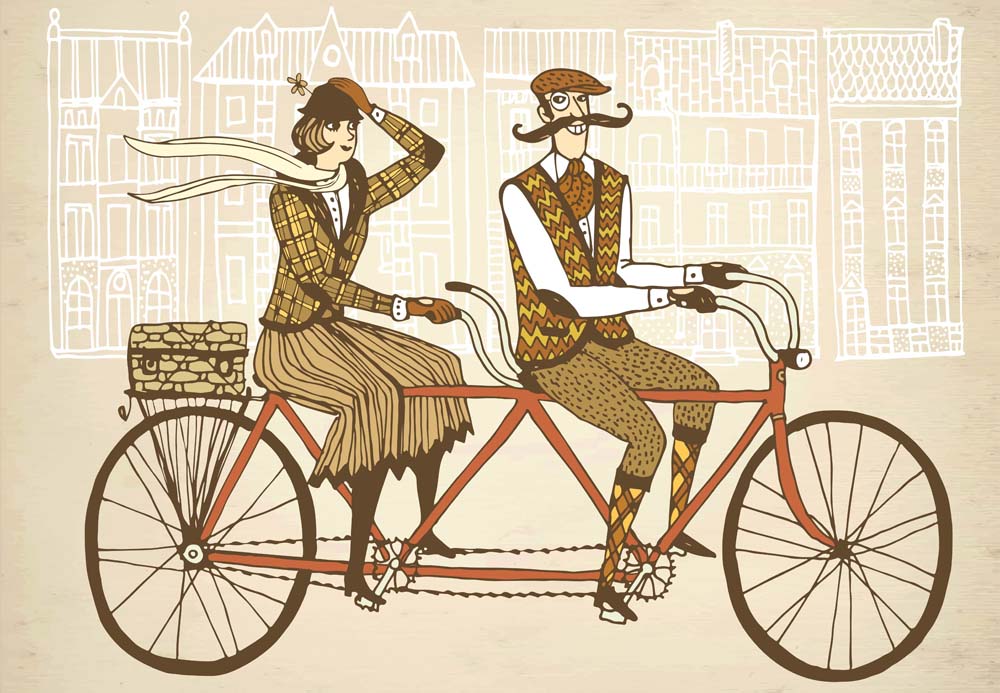 When Presidents' Day was celebrated over a century ago it had a different identify than it has today--it was known as Bicycle Day. George Washington’s birthday, which is now celebrated as Presidents' Day, was made a federal holiday in 1885, and the United States was in the middle of a bicycle boom. Since many people had the day off of work it became the day for bicycle races and for bicycle retailers to open their doors so the public could see the latest models of bicycles. During this time in history, mid-February marked the start of the annual bicycle season. A (Very) Brief History of the Bicycle The history of the bicycle starts early in the 19th century with the invention of the German draisine that had two wheels and required the riders to propel the vehicle by scooting their feet on the ground. A design that included the addition of the pedal crank came on the scene in the 1850s making it easier for the rider to propel the bike and gather more speed. These were known as the penny farthing, velocipede, dandy horse, pedestrian curricle or bone-shaker because the rigid frame and iron-banded wheels resulted in a bone-shaking experience for riders. The high wheel bicycle then came on the scene with a large front wheel to enable higher speeds. One rotation of the large front wheel made the bike go faster and the smaller rear wheel helped make the bicycle lighter. The invention of the wire-spoke tension wheel also added to the popular design. Due to custom manufacturing processes these early bicycles were mostly adopted by the wealthy and considered toys used by the young men riders. The invention of the safety bicycle in 1800s was the most important refinement that popularized the sport and made it accessible to people of all ages and income. It featured equally sized wheels, a steerable front wheel and a chain drive to the rear wheel. The evolution to a pneumatic tire and diamond pattern frame also added to increased comfort and safety. All over the world there was a lot of interest, also called a bike boom or bike craze, in the bicycle for recreation and transportation in the 1890s. A bike boom is a period of time where there is increased bicycle enthusiasm and sales followed, unfortunately, by a decline in interest, excess inventory, and reduced bike sales. The first ever bike boom was in 1819 when the first bicycles appeared, and then, additional booms were in 1868, to coincide with the introduction of the safety bicycle, 1972-1974, due to increased energy costs, and 2021 due to the COVID-19 pandemic. Celebrating Presidents' Day Early in the history of the United States, Washington’s birthday was the source of local patriotic celebrations. These included: 1. Parades Many cities and towns held parades and processions in honor of George Washington's birthday. These often featured marching bands, military units, and floats decorated with patriotic symbols. 2. Speeches It was common for public figures and politicians to have special programs and give speeches on Washington's birthday. These speeches would typically focus on Washington's life and legacy, and would often include patriotic themes. 3. School Activities Schools often held special assemblies and events to celebrate Washington's birthday. Students might recite patriotic poems or songs, or participate in reenactments of key moments from George Washington's life. You can bet there were plenty of reenactments of the cherry tree myth. The popular story recounts that when Washington was six years old he received a hatchet as a gift, damaged his father's cherry tree and declared, "Father, I Can Not Tell a Lie: I Cut the Tree," The lesson for school children was to never tell a lie. 4. Celebrations at Home Many families and individuals celebrated Washington's birthday in their own homes. This might involve decorating with patriotic symbols like flags or bunting, or preparing special meals in honor of the holiday. Cherry pie was a popular dessert. Washington's birthday was a widely celebrated holiday in 1885 and it remained an important occasion for patriotic expression and national unity. Coupled with the new interest in cycling, it became natural for many communities to equate the two together. The Nexus of Presidents' Day and Cycling With Washington’s birthday being a holiday, the public had leisure time with little to do-- except engage in or watch cycling events. Bicycle Day activities during this time included bicycle races and rides. Women started adopting the new activity, ordering new gowns that they could wear as they rode their bicycles on Bicycle Day. The newspapers and retailers promoted the commercial side of the holiday with special Presidents' Day sales at bike shops and retailers displayed the latest bicycle models. Bicycle retail stores competed to attract customers and all down the streets where bicycle shops operated you could hear ringing bells, see acetylene and electric bike lamps, and displays of bike oddities such as specially manufactured bikes that could accommodate up to ten riders at a same time. For several years, the birthday of Washington continued to be observed as Bicycle Day. But after 1900, the bicycle craze abated. Motorcycle stores sprang up where bike shops used to be and within a decade the love affair with the automobile was in full swing. Of course, the ultimate tribute to the automobile happens every year in February, the Chicago Auto Show. Presidents' Day Today
In 1968 the Presidents' Day holiday was adapted to also honor the birth of US President Abraham Lincoln who was born February 12 and moved to the third Monday in February. Today Presidents' Day is as much about consumerism as about a tribute to our founding fathers. It is promoted in the media by special sales in February no longer limited to autos and vehicles for transportation but also includes computers, major appliances, furniture, and mattresses. It’s also a time to save on smaller items such as clothing, small kitchen appliances, and electronics with many sales being promoted. February 20 does not seem like the best day to kick off the spring bicycle riding season, especially in Chicago when there is often snow still on the ground, but it is nice to think about the unexpected link between cycling and the birth of the father of our country. Bike booms come and go and the one we experienced during the COVID-19 pandemic has since passed, but for many savvy cyclists riding a bike continues to be a healthy activity that’s fun and a fun activity that’s healthy. Comments are closed.
|
Earth Rider Blog about CycingAuthorSharon Kaminecki and others comment on adventures in bicycling and other stories Categories
All
Archives
August 2023
|




